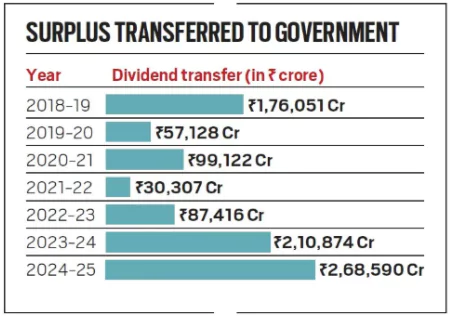![]() 27 May 2025
27 May 2025

The RBI Central Board approved a record surplus transfer of ₹2.69 lakh crore to the Central Government for the financial year 2024–25.
RBI Central BoardThe Central Board of the Reserve Bank of India (RBI) is the apex decision-making body of the central bank. It oversees RBI’s general affairs and policy formulation. Composition: It is a 21 member body.
Functions
|
|---|
Bank for International Settlements (BIS)
|
|---|
| Income Sources of RBI | Expenditure of RBI |
| Interest Income: Earnings from domestic & foreign govt securities
Forex Transactions: Gains from buying/selling foreign exchange (e.g., dollar sales) Revaluation Gains: From exchange rate-led appreciation of foreign assets Deposits with Banks: Interest from deposits with foreign central banks & BIS Lending Operations: Interest from short-term lending like LAF Fees and Charges: Commissions for govt transactions & bond handling |
Interest Paid: On reverse repo operations and MSS bonds
Currency Printing: Costs related to printing & managing notes Establishment Costs: Salaries, pensions & admin expenses Provisions & CRB: Allocations to Contingent Risk Buffer and other reserves Depreciation: On buildings, IT systems, and infrastructure |

Economic Capital Framework (ECF)
|
|---|
Contingent Risk Buffer (CRB)
How is the CRB maintained ?
|
|---|

<div class="new-fform">
</div>